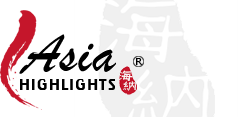Vietnam's climate varies significantly across its three main regions: the north, central, and south. While one region enjoys sunshine, another may face heavy rains or intense heat.
Best Time to Visit Vietnam at a Glance
- Nationwide: November–April
- South: Nov–Feb | Central: Feb–June | North: late Sept–Nov & Mar–Apr
Worst Time to Visit Vietnam
- Typhoon Risk: July–Oct (Central & North)
- Extreme Heat: Apr (South), Jul (Central & North)
- Festival Crowds: Tet (Jan/Feb), Christmas
In this guide, we will break down Vietnam's weather by region, offer tips for dealing with extreme weather, and suggest the best times to visit Vietnam and other Southeast Asian countries, like Cambodia.
Best Time to Visit Vietnam by Region

Southern Vietnam (Ho Chi Minh City, Mekong Delta, Phu Quoc)
Southern Vietnam enjoys a tropical climate with two distinct seasons: the dry season (November to April) and the rainy season (May to October).
During the dry season, the weather is at its best between November and February—clear skies, gentle breezes, and perfect conditions for exploring bustling streets, cruising the Mekong River, or lounging on Phu Quoc's pristine beaches. But the heat intensifies in March and April, pushing past 35 °C. If you can handle the heat, it's still a great time for beach lovers.
The rainy season doesn't mean nonstop downpours. Showers usually arrive in the afternoon or evening, dramatic but short-lived. But if you're heading to Phu Quoc, be mindful—when storms hit, ports close, and island hopping becomes impossible.

Northern Vietnam (Hanoi, Halong Bay, Sapa)
Unlike the south, Northern Vietnam has four distinct seasons. For comfortable weather and scenic landscapes, spring (March to April) and autumn (late September to November) are the best times to visit. These months bring mild temperatures in the 20s, blooming flowers in spring, and golden rice terraces in autumn—perfect for outdoor adventures.
Summer, from May to August, is hot and humid, with temperatures occasionally reaching 40°C. Typhoons can disrupt travel plans, particularly in Halong Bay, where boat tours may be canceled in July and August. However, Sapa stands out for its mist-covered rice terraces and cool retreat.
Winter, from December to February, remains mostly dry but quite cold. The mountains like Sapa can even get freezing and snowy. Hanoi sees milder winter temperatures around 15–20°C, often accompanied by cloudy skies, while Halong Bay can feel too chilly for water activities.

Central Vietnam (Da Nang, Hoi An, Hue)
Central Vietnam has a distinct climate pattern, with a prolonged dry season from January to August and a rainy season from September to December. The most pleasant months are between February and June, when temperatures are in the low 30s. From July to August, the heat becomes intense, often exceeding 35°C, making the Central Highlands, such as Da Lat, a popular escape from the heat.
The rainy season here is shorter than in other regions but more intense, with heavy and continuous downpours. Flooding happens more as well, especially in Hoi An's ancient town. The typhoon season from September to November adds another layer of unpredictability, frequently causing flight delays and cancellations. If traveling on these rainy days, keep your itinerary flexible.
Planning a trip to Vietnam? Check out our ultimate guide on the best experiences, itineraries, costs, etc.

If Traveling in Vietnam's Wettest Months
Short downpours won't usually disrupt your plans, but traveling in Vietnam's rainiest months does require extra preparation. Expect high humidity, occasional heavy rains, and potential travel disruptions, especially in certain regions.
- In the North, from July to August, Halong Bay cruises may be canceled due to rough seas. In Sapa, heavy rain can cause trail closures and landslides, making treks unsafe.
- In Central Vietnam, September to October brings typhoons, causing flooding in Hoi An and Da Nang, which may shut down riverside activities and beaches. Consider visiting Ba Na Hills or Hue as an alternative.
- In the South, September brings heavy rain to Ho Chi Minh City, flooding streets briefly. Phu Quoc and Con Dao experience rough seas, canceling water activities like snorkeling and boat tours.
With unpredictable weather, flexibility is key. Our private tours ensure a stress-free experience year-round, with 24/7 support and contingency plans. If rain affects your schedule, we'll seamlessly adjust your itinerary so you can make the most of your trip.
If you prefer to avoid the hassle, consider visiting during drier months or focusing on regions with less rainfall. See the regional itineraries from 7 Days in Vietnam.
 The Beautiful Sunset at Da Nang
The Beautiful Sunset at Da NangIf Traveling in Vietnam's Hottest Months
Vietnam's hottest months—April in the South and July in the central & the north—see scorching temperatures above 38°C (100°F), making midday outdoor activities (11 am - 3 pm) exhausting.
To stay comfortable, plan indoor activities at midday and stay hydrated. Despite extreme temperatures, each region offers a summer retreat: Sapa (North) for cool mountain air, Da Lat (Central) for its mild weather, Da Nang (Central) for a coastal breeze, and Phu Quoc (South) for a tropical island escape.
Let us handle the details: air-conditioned vehicles, refreshing cold drinks, and well-paced itineraries designed to help you beat the heat.
 The Rice Field in Sapa
The Rice Field in SapaSpecial Travel Seasons: Tet (January or February)
Tet, Vietnamese New Year, brings a unique charm—streets light up with red and gold decorations, families gather for celebrations, and temple visits offer a glimpse into local traditions.
During this festival, cities empty out as locals return home, making major spots like Hanoi and Da Nang feel unusually quiet. Many shops and restaurants close from the first to the third day, and those that stay open raise prices by at least 10%. Even Grab rides become scarce, and private car hires can cost 50% more.
If you plan ahead, avoid long travel, and don't mind limited services, experiencing Vietnam during Tet can be truly memorable.
Best Time to Visit Vietnam & Southeast Asia
If you're planning a multi-country trip across Southeast Asia, the best time to visit Vietnam generally aligns with the best seasons in neighboring countries:
- November–April: best for most popular destinations, like Thailand, Cambodia, and Laos. Just avoid central Vietnam (like Da Nang and Hoi An) in November and early December because of the rain.
- May–August: This is the best time to visit Central Vietnam along with Indonesia and Malaysia, which also experience dry weather.
- September–October: Limited dry spots. Northern Vietnam (Hanoi, Halong Bay, Sapa) and Indonesia are your best options, as most of Southeast Asia experiences heavy rain.
Best Places to Visit in Vietnam in 12 Months

| Month | Best for Regions | Considerations |
|---|---|---|
| January | Most parts of Vietnam | Mountainous far north (e.g., Sapa) may be chilly |
| February | Most parts of Vietnam | Note Tet holiday crowds. |
| March | Most parts of Vietnam | Frequent daily highs over 35°C (95°F) in Southern Vietnam |
| April | Most parts of Vietnam | Frequent daily highs over 36°C (98°F) in Southern Vietnam |
| May | Central Vietnam | The rainy season starts in the north and south |
| June | Central Vietnam |
|
| July | Central Vietnam |
|
| August | Central Vietnam |
|
| September | Northern Vietnam | One of the wettest months in Central and Southern Vietnam |
| October | Northern Vietnam; Southern Vietnam in late October | High risk of typhoons and storms in Central Vietnam |
| November | Southern & Northern Vietnam |
|
| December | Southern & Northern Vietnam, Central Vietnam in late December |
|
Get Inspired with Some Popular Itineraries
At Asia Highlights, we create your kind of journey — your dates, your destinations, at your pace. You can have any trip tailor made for your travel.



